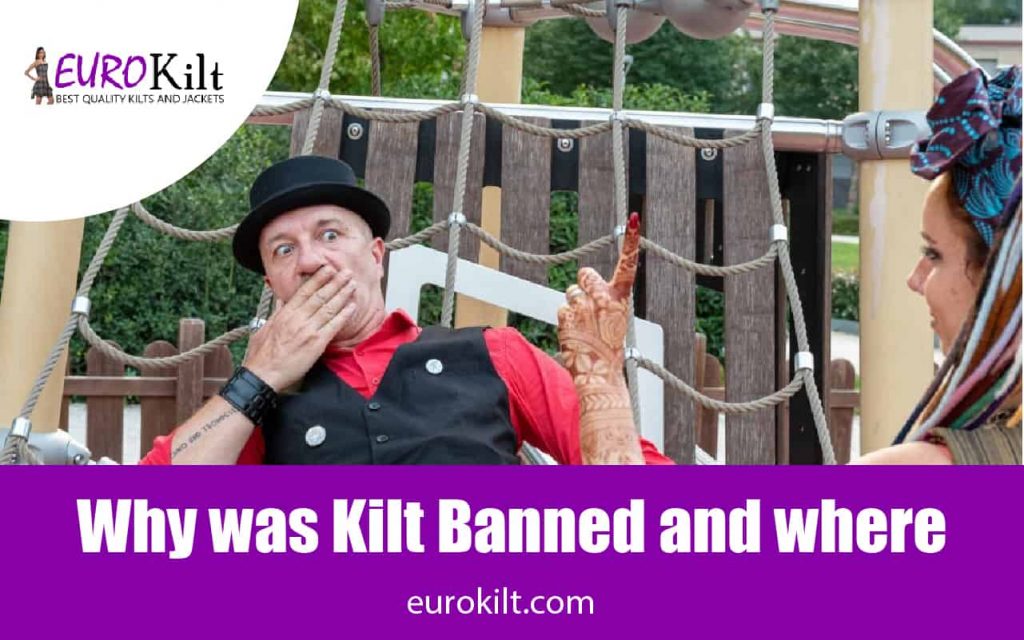Best Kilts For Men And Women, Premium Kilts And Jackets
Why the Kilt was banned and where
Today’s shortest form of the kilt is mainly derived from the great kilt. In the past, people used a scarf or woolen piece to cover the whole body in winter, or this woolen piece was worn as a traditional garment. Soldiers and soldiers were also used to wearing a large kilt to defend against various army weapons.
Why and how kilts are banned
Kilts evolved from being used to cover the body and became a uniform for both Scots and non-Scots. The kilt’s ability to remain unique while adapting to each generation is the basis of its exceptional success and recognition.
During the bloodless revolution, often known as the Glorious Revolution of 1688, Britain’s only Catholic king was thrown out of the palace.
It was referred to as “the country’s transition to parliamentary democracy”. On the other hand, the ban on the sale of kilts that followed a few decades later received little attention.
At the same time, King James II welcomed and gave birth to her first child, a son. It was bad news for the English Parliament, as the king was a Roman Catholic, unpopular in the region, and a newborn son meant ancestry for the head of the house.
As a result, they had to stop it. They promptly deposed King James from his throne and gave it to Mary, his rebellious daughter, and William, her husband.
Countless people fought and died for nearly 60 years to bring their leader back. These people were Jacobites, and their aim was simple: to return the crown to their commander, “King James II”! Most of the members of this group were Scots. These Jacobites usually wore their tartan kilts into battle.
After this conflict, it became known as a great war suit. It quickly became a symbol of the Scottish kilt’s origins. The Jacobite struggle has been going on for almost 60 years! But in the end, they lost, and England quickly passed legislation banning wearing of kilts or tartan cloth.
Where kilts are prohibited
As the kilt was widely used as a battle uniform, the garment soon acquired a new function – as a symbol of Scottish dissent. So shortly after the Jacobites lost their nearly 60-year rebellion at the decisive Battle of Culloden in 1746, England introduced an act that made tartan and kilts illegal.
An official public announcement by the British that explains the law in the exact words they used:
No man or boy in that part of Britain known as Scotland, except those employed as officers and soldiers in His Majesty’s forces, shall wear or dress in the apparel commonly known as Highland apparel upon any legal justification whatsoever.
If someone did not take the law seriously, they faced severe penalties such as six months in prison without bail or being sent overseas and out of the UK for seven years. People began to obey the law, leading to a ban on all tartans and kilts in the UK.
The government hoped people would stop wearing kilts and tartans if they complied with the legislation. However, kilts became famous as a way for individuals to show their affection for their homeland. Demonstrators also wore kilts during the demonstration.
The kilt ban was finally lifted in 1782 when the British authorities saw no need to worry about other Scottish kilt rebel groups. The ban lasted for 35 years.
FAQs
How long did the kilt ban last?
Parliament lifted the ban on the kilt in 1782 as the idea of a Scottish threat diminished. One unexpected result of the kilt ban was the emergence of the garment as a ceremonial symbol.
Why is the kilt associated with the Highlands?
It was banned after the Jacobite Rising in 1745, as was the pibroch, which was considered an instrument of war.
Why did the military stop wearing kilts?
Army uniforms were exempted from the “Dress Act” ban on wearing kilts, and regiments were given various plaids for identification. These regiments opted for modern kilts for sale uniforms, and while the large kilt remained the undress uniform, it was phased out in the early 19th century.

